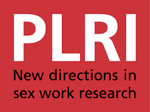An article in Rethinking Social Epidemiology
2012, Part 3, 205-230.
The transmission of HIV is shaped by individual-environment interactions. Social epidemiologic approaches thus seek to capture the dynamic and reciprocal relationships of individual-environment interactions in the production and reduction of risk.
This presents considerable methodological, theoretical and disciplinary challenges. Drawing upon four research case studies, we consider how methods and concepts in the social and epidemiologic sciences might be brought together towards understanding HIV risk as an effect of social, cultural and political condition. The case studies draw upon different combinations of methods (qualitative, ethnographic and quantitative) and disciplines (sociology, anthropology and epidemiology) in different social contexts of HIV vulnerability (street settings in Russia, Serbia and North America and a cross-border setting in Mexico) among a range of marginalised high-risk populations (injection drug users and female and transvestite sex workers).
These case studies illustrate the relevance of the social science concepts of “structural violence” and “structural vulnerability” for a social epidemiology of HIV risk. They also explore how social epidemiologic work can benefit from the mixing of social science methods and theories. We contend that social epidemiology cannot advance in its understanding of structural vulnerability without embracing and relying upon ethnographic and qualitative approaches. We put forward the linked concepts of “structural violence,” “structural vulnerability” and “risk environment” as building blocks for a theory-informed social epidemiology of HIV risk among marginalised populations. (abstract authors’ own)
Theme:
Author:
Tim Rhodes, Karla Wagner, Steffanie A. Strathdee, Kate Shannon, Peter Davidson and Philippe Bourgois

